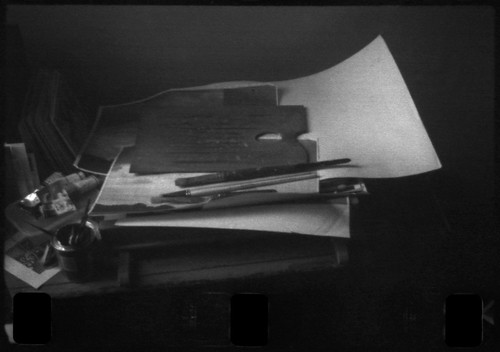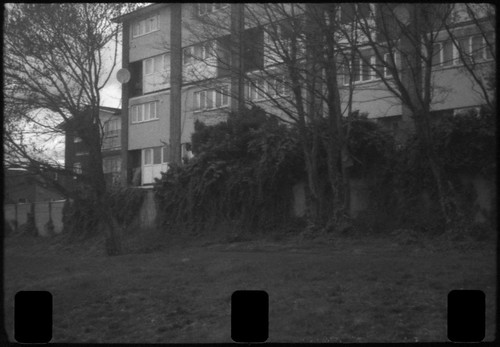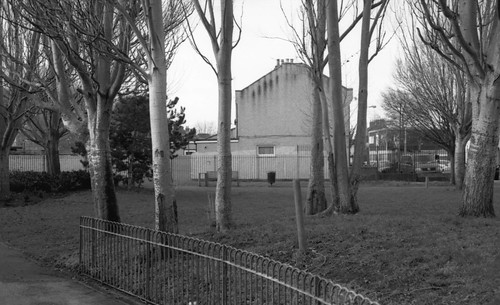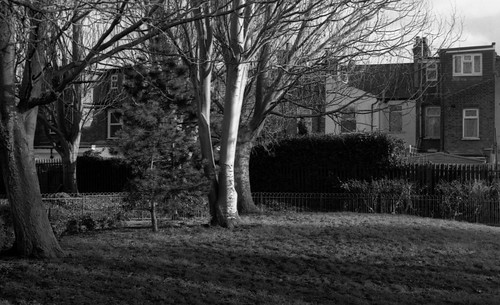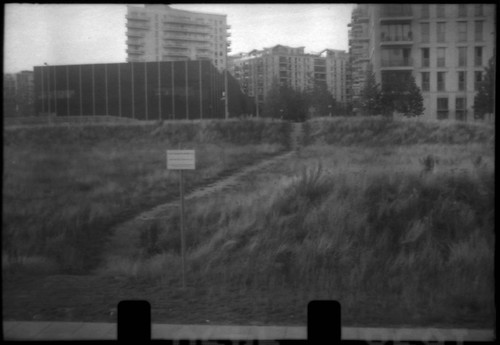What is an artistic medium? Encountering a work of art in a museum or gallery, or when this encounter takes place secondhand, through a book, magazine, or online, adjacent to the work there’s almost always a line of text, after the name of the artist (if known), after the title, and possibly the date, which will inform the reader of specific material substance or substances that constitute the object or artefact. On the website for the Marian Goodman gallery New York, Tacita Dean’s film Sound Mirrors is listed as follows:
Sound Mirrors, 199916 mm b/w film; optical sound; 7 minutesEdition of 4 plus 1 artist's proof
An artistic medium is not just the material basis for an artwork. It can be defined by its use, its practice, and the user’s intentions, as well as its constituent material. I am currently typing these words on a keyboard derived from a mechanical typewriter where once the pressure of my fingers would move metal keys, each with a raised–and reversed–letter, compressing an inked ribbon onto the surface of paper, a matrix with which to create legible, repeatable and standardised text. Now the words appear on a screen by an opaque process, the digital interface being one in which inputs become outputs by an inscrutable process. However, the medium is still writing. In the last two or three decades, with the rapid assimilation (and emulation) of what had once been long-established physical processes, there can be a tendency to see this shift creating a flat, surfaceless, frictionless digital world–a digital ’monomedium’–especially when so many tools to create anything can all be accessed through one device. Yet an artistic medium is both “‘at one and the same time’” the physical material used and the “emergent work” being created (Joseph Margolis, quoted by Nannicelli and Turvey in ‘Against Post-Cinema). This ‘emergent work’ is situated within a set of distinct social practices - production, distribution, exhibition, and, mirroring these, audience expectation.
Tacita Dean’s films are made to be seen as projections in a contiguous space with their material matrix or substrate and the apparatus for doing so. Access to Dean’s film work outside of an exhibition context is all but impossible. Digital versions do not exist. UbuWeb does have a page for Tacita Dean, but the visitor is welcomed by the note: “These films have been temporarily removed by request of the Marian Goodman Gallery. For all inquiries please contact The Marian Goodman Gallery.” There is an insistence on the physicality of the medium, and its uniqueness in the encounter with the viewer, which can only occur when both are brought together in the same space and time, an odd inversion of Walter Benjamin’s sense of the aura: as artwork originating on film, these become that unique instance that needs direct experience, not encountered in reproduction.
 |
| Voigtländer Bessa RF with Fomapan 400 |
I must have seen Sound Mirrors in 2001 as part of the exhibition 'Tacita Dean: Recent films and other works' at the relatively newly renamed Tate Britain–and I have not seen it since. (In my unreliable memory, before referencing exhibition dates, I had thought that I might have seen Sound Mirrors in the Turner Prize exhibition in 1999–I used to go every year–but Dean was nominated for the Turner Prize in 1998, one year before Sound Mirrors was made [Edit 10/04/23: Having recently found the exhibition guide to the 2001 exhibition, this was indeed where I saw the film–there is one small image in the booklet which could be a frame from the film itself, and a much larger reproduction of a 'location photograph']). Like Dean’s films, access to the sound mirrors on Denge Marsh is strictly limited, sited on a managed nature reserve. With an institutional trip arranged to Dungeness and to the sound mirrors, the possibility arose–especially since I had begun using 16mm film recently–of making something in response to the site, and to my own memories of seeing a film, once, long ago.
 |
| Dungeness, Canon A-1 with Silberra Pan 160 |
The edge of England where the sound mirrors are located has has a sense of having been rather mythologised in recent years, partly through the restricted access to the sound mirrors themselves, partly due to the particularity of the flat landscape, the coast road, the nuclear power station, and the presence of Derek Jarman’s Prospect Cottage and his garden, and Tacita Dean was not the first to commit the sound mirrors to film. Hal Foster, in ‘An Archival Impulse’, describes the sound mirrors, among other subjects of Dean’s films, as being "archival objects", and, pointedly, as “found arks of lost moments in which the here-and-now of the work functions as a possible portal between an unfinished past and a reopened future.” In 1999, encountering moving image works in a gallery or exhibition setting, the difference in image quality between film and video was still (just) marked: the ‘poor image’ of video in the hands of artists was used for its distinct qualities as a medium, oversaturated, bleeding colours, light trails, noise, all contributing to video’s immediacy. Now, film as a medium has a doubly-archival sense to it, becoming its own ‘archival object’, embodying a broad range of historical practices, once more prevalent and present, but now vanished (or still-vanishing) from a common everyday experience, like the sound mirrors, being overtaken by new technology. New technologies continue to be haunted by older forms, however, through their adoption of existing language, through emulation of processes, and through the very conception of what the medium is.
 |
| Voigtländer Bessa RF with Fomapan 400 |
In Tacita Dean (Tate, 2001) there are images of the sound mirrors, but these are described as ‘location photographs’, not actual frames from the film itself. Here it may be worth making a distinction between still frames–the individual frames which comprise the moving image–and production stills, often called film stills: it was common practice in film productions to have a still photographer on set to produce images for publicity purposes and Dean’s location photographs fit this mould. I also took a handful of photographs on medium format film with a Voigtländer Bessa rangefinder camera, my own ‘location photographs’ (I took additional 35mm photographs, not of the sound mirrors themselves, with a Canon A-1 SLR), but ones which do not need to stand in for the film itself: for this, I used a single magazine loaded with 16mm Eastman Kodak Plus-X film manufactured in 1999, the same date as Dean's Sound Mirrors. The film was exposed using a Magazine Ciné-Kodak camera from 1936, around the time that the research on the methods embodied by the sound mirrors was becoming obsolete. The length of film in the magazine determined the duration of the film: nominally 50 feet (15 metres), this provides 2 minutes when shot at 16 frames per second, the camera's standard frame rate, that of silent non-sound synchronised film. I used the lens with which the camera was provided on purchase: a 25mm f1.9 Kodak Anastigmat. On regular 16mm film (not Super-16), this gives a slightly narrow angle of view. No sound was recorded: the Magazine Ciné-Kodak does not record sound; few 16mm cameras do.
“No one who went unprejudiced to watch a silent film missed the noises which could have been heard if the same events had been taking place in real life [...] People took the silence of the movies for granted because they never quite lost the feeling that what they saw was after all only pictures.”Rudolf Arnheim, Film as Art (my emphasis)
Although naturalised, the sound film is a hybrid medium: the nature of a recorded image–a representation–and the nature of recorded sound–a reproduction–are different: when sound is reproduced–however it is recorded–it becomes sound again. Three-dimensional reality becomes a two dimensional image in the process of filming, a representation. With cameras which do (or did historically) record sound on film, most commonly through a magnetic stripe, a problem arises in that the recording of sound requires the substrate to be moving continuously, while the images require intermittent motion. Rudolf Arnheim, along with other writers on film who experienced the shift from silent to sound, and from black and white to colour, as a formalist, was wary of what he called the ‘complete film’, subjected to sound, colour, the widescreen, and stereoscopy, becoming inartistic, his conception of film as a medium depending on its limitations informing its possibilities: “…what might be called the ‘drawbacks’ of film technique (and which engineers are doing their best to ‘overcome’) actually form the tools of the creative artist.” The history of moving images is more complicated of course: films were hand coloured, tinted and toned, with the earliest ‘indexical’ colour experiments dating to around 1900. Sound was also present from film’s beginnings, harnessed to Edison’s phonograph in the ‘Dickson Experimental Sound Film’ from 1894 or 1895, synchronised with varying degrees of fidelity in the first decade of the 20th century, only for the form of film to outstrip its duration: with reproduction from a disc, sound had the same limitation as when Edison first experimented with images on a cylinder: sound needed to catch up with images and find its medium whereby the physical carrier, a spatially circular and cyclical recording, as Muybridge had achieved with projected images before Edison, became linear, allowing for expansion.
 |
| Voigtländer Bessa RF with Fomapan 400 |
My memory of seeing Dean’s Sound Mirrors twenty-one years ago is indistinct: there was no question of trying to emulate any aspects of shot length, composition, sequencing. There was also no real way of planning the film, only having access to the site on the day, with a limited time, with the result that the filming itself had to be simply improvised. The only consideration to structure was an attempt to begin with details, before building up to wider, more comprehensive angles of view, the opposite of using an establishing shot or shots to describe the space in which any action takes place. The result is ‘edited in camera’, or otherwise unedited, the continuous sequence of fifty feet unspooling through the camera. The only physical edit was removing a couple of fragmentary frames to create a clean splice at the end of the film. The nature of ‘editing in camera’ creates a coherent sequence in time, like a contact sheet of a single roll of film. The act of editing is another form of mediation of course, whether in camera or at the editing table.
 |
| 16mm fragment of Plus-X film |
That Tacita Dean’s film Sound Mirrors exists in an edition of 4 plus 1 artist’s proof suggests that this was originated on negative stock and subsequently printed, whether with internegatives or interpositives, or any other stages in between, unlike being filmed on reversal film to produce a single, unique positive. The introduction of 16mm film as an amateur format relied on reversal processing, not negative-positive printing. However, even reversal film begins as a negative, the first stage of processing develops the latent image into a negative, which is subsequently bleached and the remaining undeveloped photographic emulsion re-exposed and developed. Theoretical or philosophical approaches to the the nature of photographic mediums, whether moving or still, have drawn the photograph’s beguiling power from its semiotic status as an indexical sign, that is, the necessary direct relationship between the photographic image and its referent: light reflecting off a surface passes through a lens (or other aperture) and leaves its trace as an imprint on a light sensitive matrix. In some respects, the photographic negative functions like any other matrix to print from, like a woodblock or etching plate, and this, and its initial monochrome nature, was conceptualised as printing, and borrowed the older mediums’ language. Unlike a woodblock, a tool for making a print, the negative is different, it cannot but embody this indexicality: in some senses it is more direct than the positive which it generates: it is like a daguerreotype or Polaroid. Semiotically, the index doesn’t have to look like its referent, only to possess a direct relationship. This is, in a sense, incidental: that photographs look like their referents extends their nature as signs from indexical to icons. The most famous (and most reproduced) photographic negative is William Henry Fox Talbot’s window at Lacock Abbey, with his note in which he described being able to count every individual pane of glass. Although not an established practice, especially at its very beginnings, negatives were sometimes shown as negatives–and have been shown again as such, as with Benjamin Brecknell Turner’s calotype negatives at the Victoria & Albert Museum. In an essay by Sarah Lea, ‘Tacita Dean: Mediums’, in the catalogue to accompany the co-ordinated 2018 LANDSCAPE/PORTRAIT/STILL LIFE exhibitions of Dean’s work, Lea emphasises the importance of contact, direct and unmediated, with the real physical material that comprises the many aspects of the work, the found photographs, the blackboard drawings, and film: film “embodies that contact with the actual: to some extent photochemical film retains an aspect of a document, or perhaps a chronicle, for we are only ever a step away from fabrication.” A negative may be the slightest of steps here.
In the book to accompany the 2001 Tate Britain exhibition, the credits to Sound Mirrors list Tacita Dean as ‘camera’, with four assistants, a sound editor, and various editing and post production facilities. Given the complicated nature of film as a medium, it is often a collaborative one, with specialised division of labour: often, in gallery and exhibition contexts, such aspects of production are often hidden. My camera, film, and film magazines were all bought secondhand; the coach trip to the location was provided by the institution (as improvised, each shot was framed in an attempt to avoid other members of this party appearing on-screen; a figure can be seen just walking into the edge of the frame in one shot). Photographic chemicals (in small quantities) were bought new. I developed my film by hand, using Adox Rodinal, in two halves, followed by a water bath, fixed, then washed, dried, and then the two separate sections spliced together with presstapes (the join is at the 42-second mark in the film). It was then physically posted to Gaugefilm to be scanned (the single most expensive aspect of the whole production process), creating a (positive) digital file which was then turned back into a negative using Adobe Premiere Pro, and vertically flipped. In the camera, when exposed, the image that the lens projects is upside down, and back to front on the surface of the photographic emulsion. When I first developed black and white film, I did not fully realise that this was what was happening inside the camera, obscured by the nature of the transparent substrate, reinforced by the orientation of edge printings, but obvious when working with opaque processes, direct positives or paper negatives–and a feature of the daguerreotype, its mirror image no doubt benefitting its use for portraiture, the subjects used to seeing themselves in the same orientation.
The Eastman Plus-X negative film stock used for 'Homage', manufactured in the year that Tacita Dean made Sound Mirrors, was discontinued by Kodak over a decade ago. Dean has been active in preserving film as viable medium–the material basis–for the moving image. Perhaps, ideally, I would only show ‘Homage’ as a projection, from the unique 50ft length of original camera negative, an edition of one, physically degrading as it moves through the projector’s sprockets, pull-down claw, intermittently moving through the gate, loop after loop; but, thinking of the distinct practices of production, distribution, exhibition, and access to these channels of distribution and exhibition, the digital hybrid medium created by scanning the film allows for a flat, online distribution on such platforms as currently exist, possibly lost in a sea of content clamouring for attention, but there nonetheless.
Bibliography
Richard Abel and Rick Altman (editors), The Sounds of Early Cinema, Indiana University Press 2001
Rudolf Arnheim, Film as Art, Faber and Faber, London 1958. First published as Film als Kunst, 1933
Walter Benjamin, ‘The Work of Art in the Age of Mechanical Reproduction’ (originally published 1936) in One Way Street and Other Writings, translated by J. A. Underwood, Penguin Books, London 2009.
Tacita Dean, Tate 2001. Published on the occasion of the exhibition 'Tacita Dean: Recent films and other works', Tate Britain 15 February - 6 May 2001
Brian Dillon, 'Listening for the Enemy', Cabinet Magazine, Fall/Winter 2003 https://www.cabinetmagazine.org/issues/12/dillon.php
Hal Foster, ‘An Archival Impulse’, October, Autumn 2004
Jonathon Griffin, 'Tacita Dean: “I don’t care about the long run. I care about now.”', Royal Academy Magazine, 21/03/18 https://www.royalacademy.org.uk/article/magazine-tacita-dean
Sarah Lea, ‘Tacita Dean: Mediums’, in LANDSCAPE/PORTRAIT/STILL LIFE
Patrick Loughney, ‘Domitor Witnesses the First Complete Public Presentation of the 'Dickson Experimental Sound Film' in the 20th Century’, Film History, 1999, Vol. 11, No. 4, Special Domitor Issue: Global Experiments in Early Synchronous Sounds (1999), pp. 400-403
Ted Nannicelli and Malcolm Turvey, 'Against Post-Cinema', Cinema & Cie, vol. XVI, no.26-27, Spring/Summer 2016, pp31-43.


























